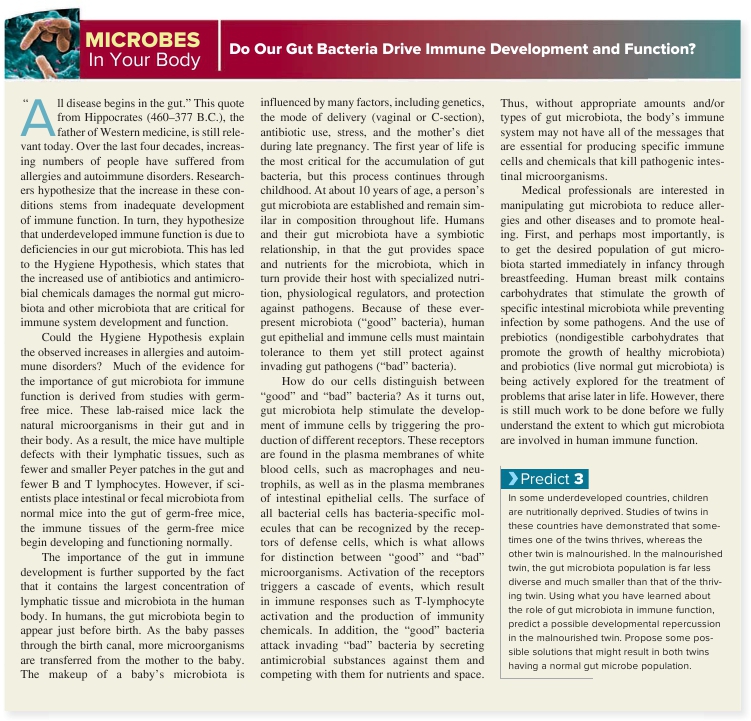CHAPTER 22 Lymphatic System and Immunity

797
specific antigen receptor. The
T-cell receptor
consists of twopolypeptide chains, which are subdivided into a variable region anda constant region (figure 22.14). The variable region can bind to anantigen. The many different types of T-cell receptors respond todifferent antigens because they have different variable regions.The
B-cell receptor,
consisting of four polypeptide chains withtwo identical variable regions, is a type of antibody.
Major Histocompatibility Complex Molecules
Although some antigens can interact with and directly activateB cells and some T cells, most lymphocyte activation involves
major histocompatibility complex (MHC) molecules.
MHCmolecules are glycoproteins found on the plasma membranes of
most of the body’s cells. Each MHC molecule has a variable regionthat can bind antigens found inside the cell. The immune systemcannot directly respond to an antigen inside a cell. Instead, MHCmolecules display antigens produced or processed inside the cell onthe cell’s surface. Two classes of MHC molecules are present inthe body: MHC class I and MHC class II.
MHC class I molecules
are found on nucleated cells; theydisplay antigens produced inside the cell on the cell’s surface(figure 22.15
a
). For example, viruses reproduce inside a cell,forming viral proteins that act as foreign antigens. Some of theseviral proteins are broken down in the cytoplasm. The proteinfragments enter the rough endoplasmic reticulum and combinewith MHC class I molecules to form complexes that move